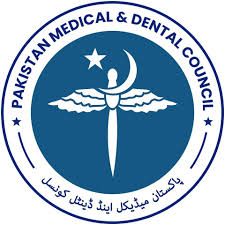The Role of Multidisciplinary Teams in Managing Severe Trauma in Emergency Settings: Optimizing Coordination and Care
DOI:
https://doi.org/10.37018/JFJMU/IHR/2948Keywords:
Trauma Management, Multidisciplinary Teams, Resource-Limited Settings, Patient OutcomesAbstract
Background: Trauma is a leading cause of morbidity and mortality, especially in resource-limited settings with limited infrastructure and personnel. Multidisciplinary trauma teams (MDTs) are crucial for effective management, yet their implementation in such environments faces challenges. This study evaluates the impact of MDTs on patient outcomes and identifies strategies to enhance trauma care in resource-constrained settings.
Patients and Methods: This retrospective study included 90 adults with severe trauma admitted to the A&E. Patients were categorized based on the quality of multidisciplinary team care: MDT-Optimized (coordinated, timely interventions) and Non-Optimized (delayed or incomplete interventions). Data were collected on demographics, injury details, and outcomes from electronic medical records, focusing on in-hospital mortality, morbidity, hospital stay, and time to treatment.
Results: Of the 90 patients studied, 74.4% had blunt trauma, primarily from road traffic accidents and falls. The mean Injury Severity Score (ISS) was 23.5. Sixty-four percent received MDT-Optimized Care, while 36% experienced delayed or incomplete care. The MDT-Optimized group had faster times to surgical intervention (2.4 vs. 4.1 hours) and initial stabilization (12.5 vs. 24.8 minutes). Mortality was lower in the MDT-Optimized group (5.2% vs. 28.1%) and morbidity was reduced (15.5% vs. 59.4%). Hospital stays were shorter (9.6 vs. 14.3 days), and recovery outcomes were better, with 82.8% of MDT-Optimized patients discharged with full recovery or mild disability compared to 50% in the Non-Optimized group. Multivariate analysis highlighted ISS >25, delayed surgery, and lack of MDT coordination as factors increasing mortality and morbidity.
Conclusion: In conclusion, this study demonstrates that the involvement of multidisciplinary teams in managing severe trauma in emergency settings significantly improves patient outcomes, including reduced mortality, lower complication rates, shorter hospital stays, and better recovery. The findings are in line with previous studies and underscore the necessity of implementing well-coordinated, team-based approaches to trauma care, particularly in resource-limited environments.
Downloads
Published
How to Cite
Issue
Section
License
The Journal of Fatima Jinnah Medical University follows the Attribution Creative Commons-Non commercial (CC BY-NC) license which allows the users to copy and redistribute the material in any medium or format, remix, transform and build upon the material. The users must give credit to the source and indicate, provide a link to the license, and indicate if changes were made. However, the CC By-NC license restricts the use of material for commercial purposes. For further details about the license please check the Creative Commons website. The editorial board of JFJMU strives hard for the authenticity and accuracy of the material published in the journal. However, findings and statements are views of the authors and do not necessarily represent views of the Editorial Board.

















